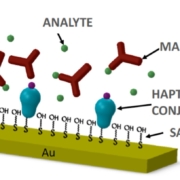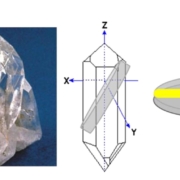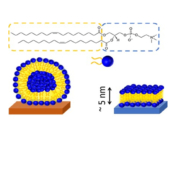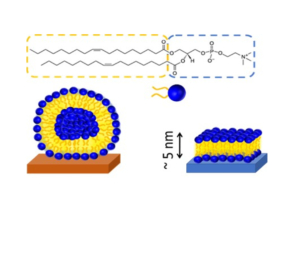July 3rd 2020: AWSensors is pleased to invite you to take a look to the Biosensor Application Note entitled “Acoustic Biosensor“.
Summary of the Note
An immunosensor application for determination of carbaryl pesticide was developed by using AWS A20 research platform and AWS F20 Fluidic System. Carbaryl was chosen as the model analyte. Two kinds of acoustic sensors were employed: AWS HFF-QCM sensors (50 MHz and 100 MHz) and Love-SAW sensors with appropriate cells. The AWS A20 platform allowed monitoring phase-shift changes at constant frequency as a function of the sensor surface mass changes.
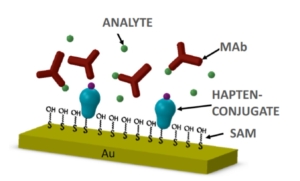
Introduction
Sensor functionalization: Carbaryl hapten conjugate was covalently immobilized by means of Self Assembled Monolayer (SAM).
Immunoassay format: The chosen competitive immunoassay was a binding-inhibition test based on conjugate-coated format. Carbaryl analyte competes against the immobilized hapten-conjugate for Monoclonal Antibodies.
Carbaryl detection: Samples were injected onto the sensors’ surfaces. AWS software allowed controlling sample injection and fluidics. Furthermore, the employed platform allowed performing the measurements at a constant temperature of 25°C ± 0.05°C.
Since analyte inhibits antibody binding to its respective immobilized conjugates, increasing concentrations of analyte are detected by a change in the increment of the phase-shift of the sensor. The following figures present a representative assay cycle selected from a continuous monitoring in a carbaryl determination, for 100 MHz HFF QCM and 120MHz Love Wave Sensors.
Continue reading by downloading the full Application Note (below) …
You can download the full Application Note in pdf file from this link or download it from our Applications Web Page where you can find this and the rest of our Application and Technology Notes.


